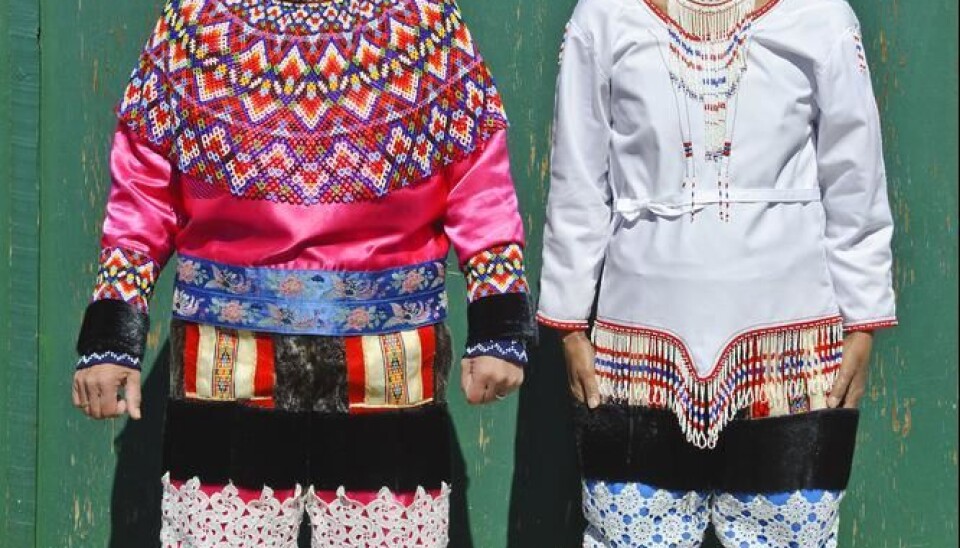
Despite self-governing, Inuit still suffer social and health problems
GREENLAND: Greenland Inuit experience the same health and social problems as other colonised indigenous peoples, shows new research. But there are signs of improvement.
The Greenlandic Inuit, Australian Aboriginals, the Mayans of Central America, the Igorot of Asia, and the Swedish Sami, are among the 370 million indigenous peoples in the world, according to the UN.
They all look different to one another, and have a different history and traditions, but all of them have at some point been deprived of influence over their country by a foreign power.
Many of the 5,000 different indigenous groups around the world are fighting for the right to self-determination in their own region. And some are casting a long, envious look at Greenland’s home rule.
"Other indigenous peoples--including Inuit in Canada and Alaska--think that the autonomy that we have in Greenland, is highly sought after," says Birger Poppel, who studies the social and living conditions in the Arctic at the University of Greenland (Ilisimatursarfik), Nuuk.
Native people have their own problems
Even though Greenland has home rule, the Inuit community still suffer many of the same health and social problems as other remote indigenous people around the world.
These are the conclusions of a study, recently published in the medical journal The Lancet.
The study is the first to compare the health and social conditions of 28 groups of indigenous people with ‘non-indigenous’ people.
And it does not make for encouraging reading.
They discovered that when compared to non-indigenous people, indigenous communities have a lower life expectancy, higher infant mortality, an increased number of newborns with abnormal birth weight, more women who die in childbirth, more obese adults and children, a lower level of education, and worse economic conditions.
Signs of improvement in Greenland
Peter Bjerregaard is a professor at the State Institute for Public Health in Denmark, and the University of Greenland. He has previously published a report on Greenland’s social conditions, health, and life style and contributed data to the new research.
Despite the fact that Inuit in Greenland struggle with many problems common to other indigenous groups, there are signs that the situation is improving in Greenland, he says.
“In Greenland, we’re well on the way and things are improving in a range of areas. Greenlanders have home rule and a health system that they are responsible for themselves,” says Bjerregaard.
“But it’s a long process to come up to the level of Denmark. And it’s not something you can do in five to ten years,” he says.
Too few educated Greenlanders
One of the reasons behind the worrying figures is Greenland’s history, says Poppel.
“Many positive things came out of the ambition to make Greenland a modern country and a welfare state society after colonisation in the 1950s. Among these are health. But we’ve also made lots of mistakes, which we can still see traces of,” says Poppel.
Greenland became a part of Denmark in 1953, after which many Danes emigrated to help establish the welfare state society.
“But it happened so quickly that there was no time to think about it properly,” says Poppel.
One of his criticisms, is that Denmark did not adequately provide for the education of Greenlanders, who were not particularly interested either.
History of colonisation results in social trauma
According to Poppel, Greenland’s colonial past and the rapid changes introduced have left many Greenlanders suffering from a kind of social trauma, which develops when a group of people feel isolated from the decision making process in their society.
“Greenlanders watched from side line as Danes came in and established the public administration. Inuit communities felt powerless, which contributed to social trauma. We still see the consequences of that,” says Poppel.
Professor Jens Dahl agrees. Dahl studies human rights at the Danish Institute for Cross-Cultural and Regional Studies, University of Copenhagen, Denmark, and was recently elected to the UN’s Permanent Forum of Indigenous People.
The colonisation and the process of de-colonisation that took place after the Second World War has left its mark on many indigenous people right across the world, says Dahl.
“It’s reflected in, for example, an enormously high suicide rate--not only among Inuit in Greenland and the rest of the Arctic, but also among the indigenous people of North and South America, for example” he says.
Greenland’s development admired by others
But despite Greenland’s post-colonial problems they are in many ways, much better off than other indigenous groups.
“The way that Greenland obtained Home Rule can’t simply be copied elsewhere in the world, but it is often seen as a kind of model because it’s worked well for Greenlanders--especially economically,” says Dahl.
Greenland has developed since it adopted home rule in 1979 and later expanded its powers of self-government in 2009, he says.
“It has led to a self-assurance in the Greenlandic population,” he says. “We can see that Greenland’s politicians negotiate solutions with Denmark as an equal negotiating partner,” says Dahl.
-------------
Read the Danish version of this article on Videnskab.dk
Translated by: Catherine Jex






